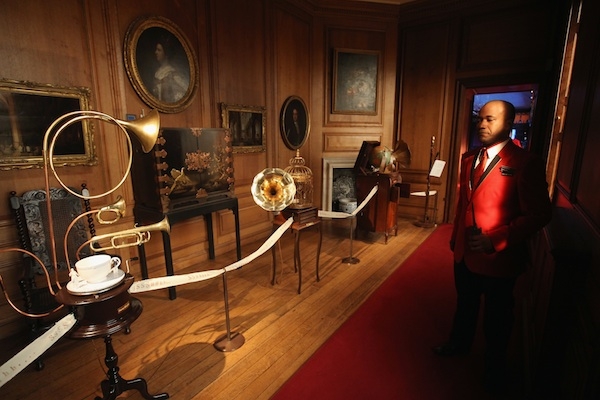What do Historic Royal Palaces think they are doing? They’re the people who look after the five royal palaces not occupied by the Queen, and their activities have been constrained by the fact that most of the contents are owned by her. But the recent reopening of Kensington Palace has gone to their heads. It’s as if, after decades of patiently interpreting the arcana of royal households, they’ve burst out of their corsets and gone wild.
Kensington Palace, remember, is an edifice of such established importance that it’s not even listed. The only thing that is listed there is the statue of Queen Victoria in Kensington Gardens. Kensington Palace was scheduled as an ancient monument long before listing came into existence.
Just the place, you might have thought, for Michael Day, the HRP’s chief executive, to fulfil the vision that he sets for his organisation. ‘In a world that is more uncertain than ever, people are searching for roots, foundations and anchors,’ announces Mr Day on the HRP website. ‘They want to understand how the past shaped the present, and they want to protect the things they value.’
But rather than taking the palace seriously as an historic place, the new display is the equivalent of a pantomime. The visitor is treated like a child who has been invited on stage. We have themes, moods and theatrical effects; but precious few facts. We have actors engaging us in conversation about court news. Where there are genuine exhibits — uniforms, Queen Victoria’s baby shoes — they don’t have labels.
I went to see the staircase by Sir Christopher Wren in the Queen’s Apartments. The space has been filled by a tree-like structure, which might also be a mast, from whose branches hang ships in bottles. There is a heap of old luggage at the bottom of the stairs. Why? Because this symbolises the Glorious Revolution, during which time James II metaphorically packed his bags. You can hardly see the staircase.
A room full of old-fashioned gramophones with horns represents the whispers of court intrigue. The anteroom to the bedchamber is set with a motley assemblage of children’s chairs, alluding to the birthday party held for little Prince William, the only issue of Queen Anne’s 17 pregnancies to survive babyhood, who died shortly after turning 11. You can barely make out the restored state bed: it’s hidden behind a wall of boxes containing cut-outs of possible heirs to the throne.
I admit that Kensington Palace is a challenge. Since it was created by William III, who found Hampton Court too damp for his asthma, it has been used to house members of the royal family. It has repeatedly been chopped up to make apartments and revamped to suit the tastes of the day. Recently, David Linley has left and William and Kate have arrived, along with Harry. That’s what it’s always been like: constant change. Until a few years ago, the result was a dog’s dinner. Yet the display occupies a building that has just been faultlessly restored. The classical architect John Simpson has succeeded in disinterring the architectural logic of the palace, which had been lost under three centuries of alterations. It is at last possible to read the two sets of state apartments for what they are: grand sequences approached by staircases and leading up to the royal bedchambers. The thicket of a garden that obscured the east side of the palace from Kensington Gardens has been removed. Ingenious structural works have been accomplished. There’s a café, spilling on to a terrace, but cunningly shielded from the piano nobile windows.
HRP are to be congratulated for this work. What a pity they seem to despise it. In their press releases for the reopening before Easter, this supreme achievement, involving painstaking negotiation with English Heritage over every detail, wasn’t mentioned.
The architecture-hating display is not, I grant you, permanent; one day, an enlightened curator will dump it all in a skip. Until then, visitors will be as puzzled as the Asian man I saw bent over an A4 information sheet, trying to identify the objects around him. The sheet I picked up belonged to a different room. He could still be there.
Clive Aslet is editor at large of Country Life.





Comments